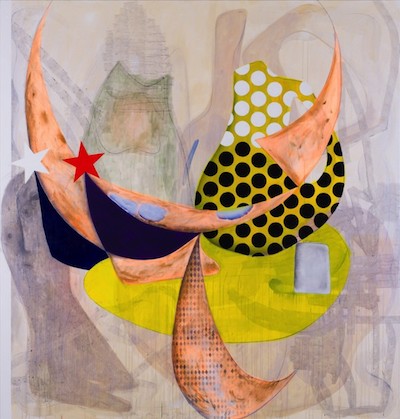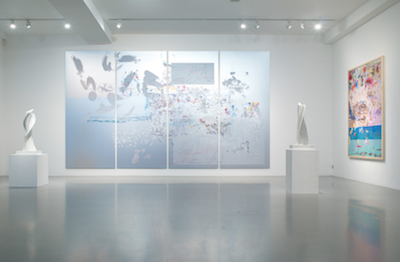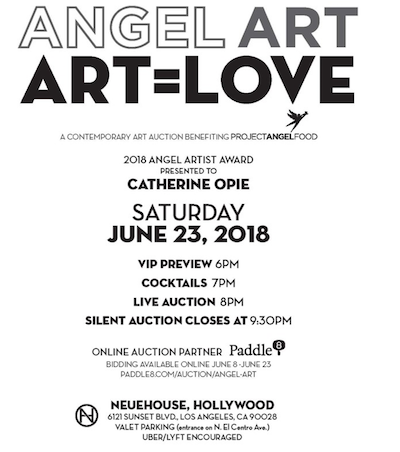Ana Prvacki's Stealing Shadows, Michelangelo, 2007 will be on display at Sculpture Milwaukee, a free outdoor urban sculpture experience in downtown Milwaukee, on exhibit June 1 - October 21, 2018.
“Sculpture Milwaukee brings a new level of energy and excitement to the streets of downtown Milwaukee,” said Beth Weirick, CEO of Milwaukee Downtown, BID #21. “Once again, we’re delighted to activate our main street with works that will captivate downtown residents, workers, students and out-of-town guests. We’re excited to host these works and put downtown Milwaukee on an international art platform.”
The newly released works include: Ghada Amer’s Blue Bra Girls, 2012; Richard Deacons’s Big Time, 2016; and Ana Prvački’s Stealing Shadows, Michelangelo, 2007. John Henry’s Zach’s Tower, 2007; Sol LeWitt’s Tower (Gubbio), 1996; and Tony Tasset’s Mood Sculpture, 2017 will be carried over from Sculpture Milwaukee 2017.
These works will join Magdalena Abakanowicz’s The Group of Five, 2014; Sanford Biggers’ BAM (Seated Warrior), 2017; Yoan Capote’s Nostalgia, 2013; Tom Friedman’s Hazmat Love, 2017; Liz Glynn’s Untitled (Burgher with extended arm), 2014; Gary Hume’s Bud (bronze), 2016; Jessica Jackson Hutchins’ Reason to Be, 2017; Mel Kendrick’s Marker #2, 2009; Shana McCaw and Brent Budsberg’s Skew, 2018; Kiki Smith’s Seer (Alice II), 2005; Bosco Sodi’s Untitled, 2017; Hank Willis Thomas’ Liberty, 2015; Bernar Venet’s 97.5° Arc x 9, 2007; and Erwin Wurm’s Half Big Suit, 2016, which were previously announced last month.
Led by Steve Marcus, chairman of the board of The Marcus Corporation, Sculpture Milwaukee is an annual gift to the community, bringing world-renowned works to an accessible and approachable environment for all to enjoy. From art connoisseurs and collectors, to school children and office workers, the installation will spark imaginations and activate Wisconsin Avenue. Sculpture Milwaukee 2018 is curated by Russell Bowman, an art advisor based in Chicago and former director of the Milwaukee Art Museum, and Marilu Knode, Sculpture Milwaukee’s project director and former director of Laumeier Sculpture Park in St. Louis.
Ana Prvački finds our daily world an unparalleled stage for artistic interventions. She resists our obsession with material things and applies a playful touch to her critical thinking on how we allow objects to dominate our lives. Prvački has focused on different social norms regarding personal space; on the tangible influence of ephemeral music; and has invented all kinds of contraptions that celebrate the human capacity for invention of useless things. In Stealing Shadows, Michelangelo, 2007, Prvački draws inspiration from Michelangelo’s world-renowned monument of David – the shepherd boy who defeats Goliath in the Old Testament by using a simple sling and rock. While Michelangelo elevates a commoner to the status of victor, David’s face is also wrinkled with concern. By presenting David’s shadow on the street, Prvački brings to us a monument of comfort and faith in the way we face the challenges of our own daily lives. Prvački's provocative appropriation also pokes at the long shadow this monument plays in establishing standards for public art. Stealing Shadows, Michelangelo, 2007 is on loan courtesy of the artist and 1031PE, Los Angeles.




![kreiter_watershedinterior2_arts[1].jpg](https://images.squarespace-cdn.com/content/v1/59cc690fcf81e0b2a21215aa/1530121851606-M5L3530AJWO56IBXJYQS/kreiter_watershedinterior2_arts%5B1%5D.jpg)


















